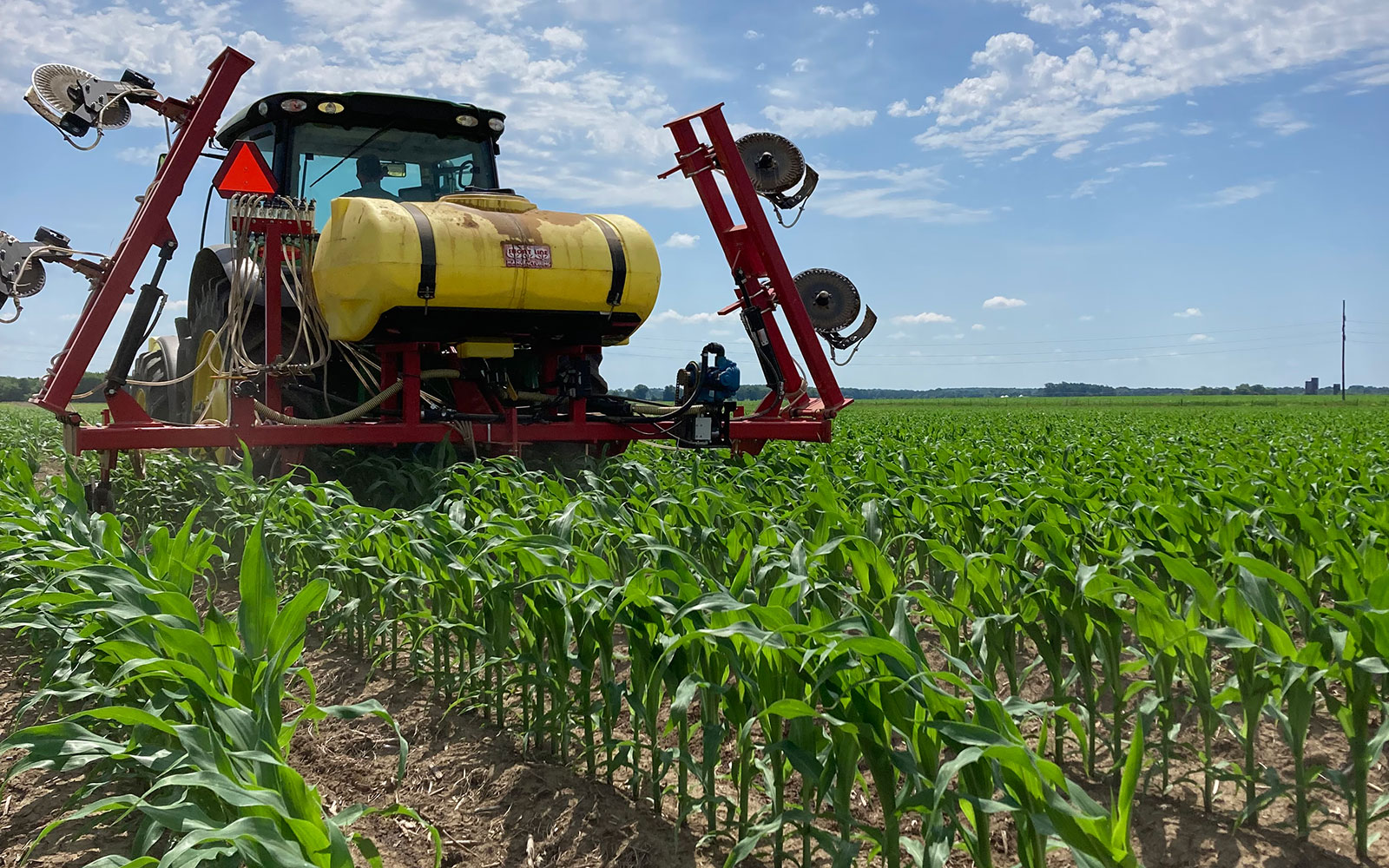News
MSU Research Keeps Fertilizer in Corn Fields and Out of Waterways

Corn loves nitrogen fertilizer—a critical and costly input for Mid-South commercial corn production systems. But nitrogen fertilizers also take a toll on the environment when they make their way from agricultural fields into rivers, lakes and, eventually, the ocean.
Wouldn't it be great if growers used a fertilizer application system that maintained or improved crop productivity through increased nitrogen availability while reducing fertilizer rates and adverse environmental outcomes?
That's the question Morgan Hutton is trying to resolve through his graduate research at the Water Resources Research Institute at Mississippi State University. Hutton graduated from Mississippi State in 2023 with an agronomy degree and will receive his master's in plant and soil sciences with a concentration in agronomy in May.
"My research hits home for me because I come from a row-crop farming family in the Mississippi Delta," Hutton said. "I was even able to implement research for my master's project on my family farm in Tchula as well as at the Mississippi Agricultural and Forestry Experiment Station's Black Belt Branch in Brooksville, which were great learning experiences."
For decades, Mississippi corn growers have helped the U.S. maintain its status as the world's top corn producer. But high-volume production and the associated fertilizer demand and runoff have created agronomic, economic and environmental challenges for the nation's growers.
That's why Hutton is exploring application strategies that improve nitrogen uptake, increase productivity, and reduce fertilizer loss in commercial corn production systems—outcomes that allow growers to boost yields, preserve costly inputs and keep more money in their pockets.
Optimizing fertilizer application is a game of inches. Hutton's research involved experiments with urea ammonium nitrate, a common nitrogen fertilizer source in Mid-South corn production, to determine the effects of different placement strategies on corn yield and nitrogen uptake.
Hutton found that injecting nitrogen fertilizer in two trenches near adjacent crop rows damaged plant root systems and decreased grain yield when compared to injecting nitrogen fertilizer in one trench midway between crop rows.
He also wanted to determine if nitrogen fertilizer injection depth and trench covering could impact runoff nitrogen loss. Nitrogen fertilizer can be lost in surface runoff if substantial rainfall occurs soon after application. Hutton found that dribbling nitrogen fertilizer onto the soil surface, or covering the 4-inch nitrogen fertilizer injection trench, helped reduce runoff nitrogen loads.
"My hope is that producers can take my research information back to their farms and find more ways to improve their operations," Hutton said. "I would not have been able to complete my research without my fellow teammates at the institute. They're committed to helping students achieve their research goals and helping growers thrive in ways that protect and preserve our water resources."
The Water Resources Research Institute at Mississippi State University is a leader in addressing critical water and land use challenges. Collaborating with leading water resources officials, the institute develops innovative research solutions that benefit Mississippi, the region and the nation. Learn more about the institute at www.wrri.msstate.edu.
View More News